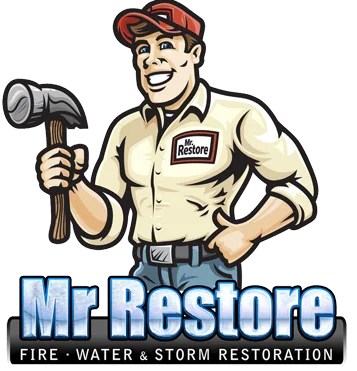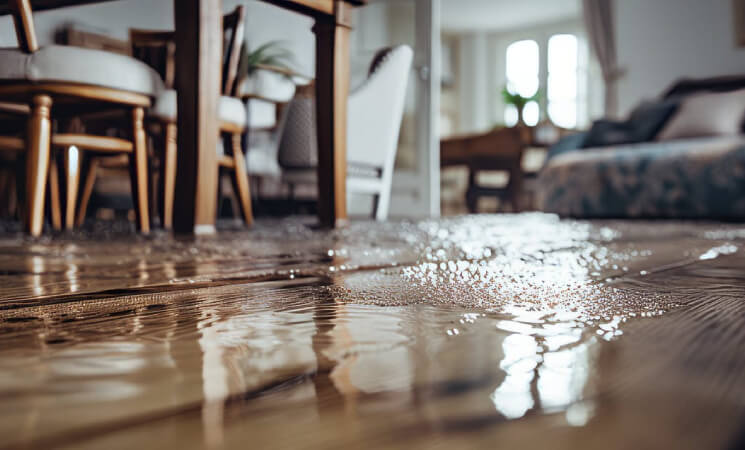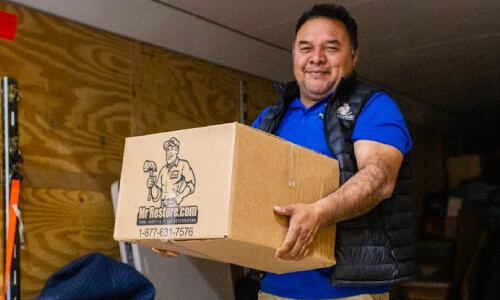Did you just encounter water damage? What’s the extent? Is it just a small spill, or is your home flooded by now? Whatever the severity may be, water has a habit of finding its way downwards and into the foundation, affecting the structural integrity of your home. What does this imply? That cleaning the surface isn’t enough. Most of the water damage actually takes place behind the walls and beneath the floors, away from sight. And in order to clean the mess and repair the damage, you require professional water damage restoration in Fort Worth, TX. At Mr. Restore, we use advanced equipment and processes to find interior and exterior damage, ensuring your house structure doesn’t degrade. So now that you’ve encountered water damage, what should you do next? Our expert team dealing with water damage restoration in Fort Worth, TX, has put together the following steps which you must follow if you ever encounter water damage. Doing so will minimize the aftereffects and mitigate health risks involved with standing water.
Step 1: Stopping the flow
The first and the most important step of water damage restoration in Fort Worth, TX. The sooner you do this, the lesser will be the extent of the damages that you encounter. Turn off the main water valve and close the water supply. Whatever the underlying cause may be, this is still the first step. What if you don’t know where the valve is located? Now is the time to find out – and when you do, make sure all your family members are also aware of the location as well so that anyone can turn off the valve in case of an emergency.
Step 2: Signing up for professional water damage restoration in Fort Worth, TX
The second step is to reach out to Mr. Restore so that we can arrive at your property and initiate our procedure for water damage restoration in Fort Worth, TX, right away. Standing water can start damaging the surroundings just a few hours from the occurrence of the incident. Also, mold, fungi, and bacteria tend to breed in damp environments. If these microorganisms infest your house, you’d be exposed to several health problems, including respiratory conditions and infection. So it’s best that you act immediately and get in touch with us. We’ll arrive at your site with all the necessary equipment and a team experienced in water damage restoration in Fort Worth, TX.
Step 3: Turning off the power and electrical appliances
Upon reaching your site, the first thing that we’ll do is turn off the electric power supply. We’ll inspect your main unit and the fuse box and turn off the main breaker first. We’ll also turn off the circuit breakers. In case the area is wet, we’ll dry it up first. We’ll then begin unplugging all your appliances, beginning with the small ones and disconnecting them from the power source. For larger appliances, we’ll move them to higher ground if required. Another option is to place them on blocks, but this can only be implemented if the blocks don’t vibrate when the appliances are being used.
Step 4: Plugging the utilities
In some cases, sewer backup can follow water damage, worsening the situation. As a preventative measure, we’ll plug your showers, sinks, toilets, and other drains. If required, we may check your sump pump as well and ensure it’s in working order.
Step 5: Switching off the heating and cooling unit
You shouldn’t turn on your HVAC unit until we have completed water damage restoration in Fort Worth, TX. If the system or surroundings are wet, there is a risk of electrical shock. Even if the area is dry, then air from the unit can force contamination to spread.
Step 6: Drying up
If water damage is severe, then your flooring and carpet may be wet. We’ll use dehumidifiers to dry them up. In rare cases, when the carpets are too wet, we may take them to our facility and treat them there so as to restore them more effectively. Generally, we don’t use fans for the purpose unless we have to dry a small area away from the electric wiring.
Step 7: Moving your items to a dry location
Generally, we prefer moving your furniture when drying up any space. This prevents your furniture from damaging and ensures a quicker drying process. If the furniture is too heavy and can’t be removed easily, we’ll keep it on wood blocks or aluminum foil to prevent it from touching the wet carpet. We’ll also move other items to a dry location. While doing so, we’ll assess the damage and divide your belongings into salvageable and unsalvageable.
Step 8: Filing a claim
Water damages might be covered by your home insurance policy if the incident occurred suddenly. So reach out to your insurance provider, find out all details, and file a claim. Your provider may send a representative to inspect your site before we cater to your request. If they don’t, they will ask you for evidence. So do take photos of all damaged items as well as structural damage.
What is expected of you before we arrive?
The Mr. Restore team dealing with water damage restoration in Fort Worth, TX, will do their best to arrive at your site quickly. But until we do so, please keep the following guidelines in mind to prevent the damage from worsening.
- Turn off the main water supply, as already discussed.
- Don’t use any electrical appliances, especially if the floor or carpet is wet.
- Don’t go into the basement. Also, don’t go into any room if you can hear strange sounds.
- Avoid turning on your fans. For starters, they cannot dry out water effectively and also allow contamination to spread quickly.
- Make no attempts to clean the water damage yourself. Water damage restoration in Fort Worth, TX, is not a DIY task and is best left to the professionals.
Visit our website www.mrrestore.com for more information on water damage restoration in Fort Worth, TX.






